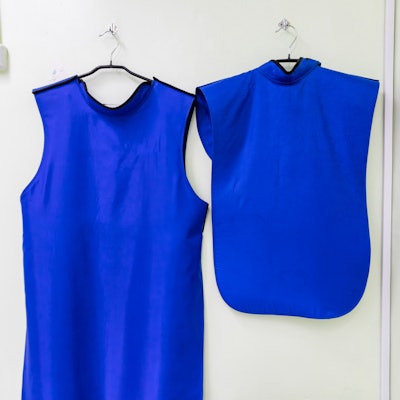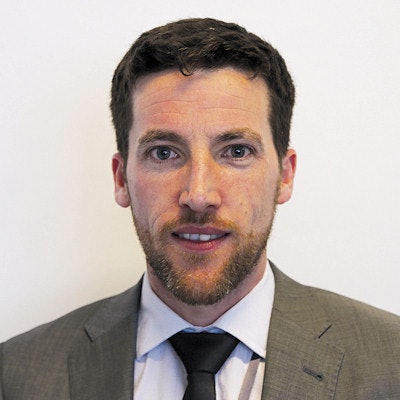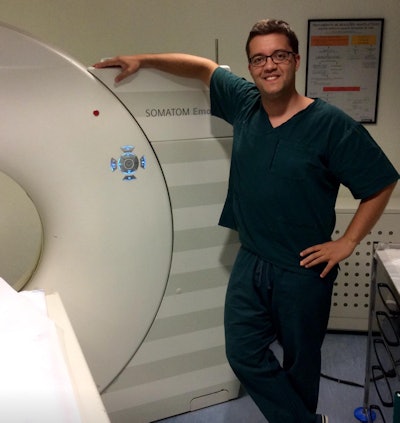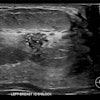
Debate is intensifying across Europe over the contentious -- and as yet unresolved -- issue of whether lead shielding for patients offers any major radiation protection benefits against radiation dose. As the medical imaging community awaits guidance and consensus from the relevant authorities and societies, we asked radiographers to elaborate on the key points and current best practice.
The contributors to this article came from Ireland, Portugal, Sweden, the U.K., and the Netherlands. This follows on from some important coverage of this subject by our sister site AuntMinnie.com.
Shane Foley, PhD, associate professor and lecturer, radiography and diagnostic imaging, University College Dublin School of Medicine
Practices regarding the use of lead apron/shielding are quite varied and often specific to individual radiographers and also to individual patients. Radiographers are very aware of their obligations -- both moral and legal -- to promote optimization and radiation protection for their patients, but they will tailor optimization to suit the patient and procedure. Recent graduates are less inclined to use shielding due to the acknowledged low doses in current use, or when they do, it is to preferentially shield more radiosensitive organs such as the breast tissue.
 Shane Foley, PhD.
Shane Foley, PhD.From a quick straw poll conducted earlier this month, I found that four of five centers who responded do not include the use of lead shielding, so it would seem that practices are changing nationally. This is based on a small sample, however.
Lead aprons are seldom, if ever, used in Irish CT facilities, although with current wide-detector scanners that irradiate beyond the planned scan range for image reconstruction, there is likely an advantage to shielding organs such as the breast/lung/thyroid when shielding can safely be used outside of the scan range itself -- to avoid adversely affecting image quality and also operation of the automatic exposure controls. While internal scatter is a large component of radiation dose to organs outside the scan range, we must remember that quite a bit of scatter originates from the CT gantry itself and its various components.
All trainees/students are informed of the benefits/utility of using lead shielding to protect both themselves and the radiosensitive organs of patients where possible, as long as image quality is not adversely affected. Most of the recent literature on the appropriateness of organ shielding seems to base recommendations against the use of lead shielding almost entirely on poor placement practices -- rather than on the dose-saving potential proffered. Careful placement of shields is crucial to any potential benefits accruing, but they should not be dismissed without thorough consideration of the role they can play in optimization, in particular for follow-up imaging.
Overall, there is a move to more standardization of practices. I think it is imperative that radiographers' professional societies take the lead and commission required research before agreeing on practice guidelines both nationally and internationally so that we can put evidence-based practice into effect wherever patients encounter imaging. A single, best-practice, unified, standardized approach that is evidence-based is what radiographers need and what patients deserve.
Kevin Barros Azevedo, PhD, lecturer, medical imaging and radiotherapy department, University of Algarve, Portugal
In conventional x-ray, aprons and shielding are used to protect patients. For CT, it is not the case, because it increases dose in adjacent tissue. Some radiographers use an apron when a patient requests it and refuses to comply in a CT exam without shielding, even with a clear explanation. Radiographers accept the patient's request only when the benefit of the exam and excess dose outweighs the risk of not doing the exam.
 Kevin Barros Azevedo, PhD.
Kevin Barros Azevedo, PhD.As far as I know, procedures are similar between hospitals in Portugal. The basic training is very equivalent between all the medical schools, which favor homogenous procedures in the practice field. We do not have national guidelines on this specific topic. It would be great to have such.
I have worked for the past 10 years, even during training, and the use of a lead apron in CT was not a normal thing to do. Doctors do not usually ask, and when they do, we explain and they understand. Patients are aware of radiation dose, and in some cases they are sufficiently afraid to request an apron. After an explanation, usually they understand. It is generally accepted among radiographers that CT has specific characteristics regarding radiation protection, which does not include an apron. More research must be done, but I think we have enough evidence that an apron in CT does not serve the purpose of radiation protection.
Kristina Ydström, PhD, medical physicist, Skåne University Hospital, Lund, Sweden
When possible, radiographers leave the scanning room to avoid radiation exposure, and that happens in almost all cases. Very rarely for CT and for a conventional x-ray, they have to stay in the scanning room during exposure, and in that case they wear shielding, including an apron, thyroid shielding, and in the case of interventional procedures, glasses too.
Products are certified according to European Union (EU) guidelines and standards, and they are CE Marked. We have our own rules in Sweden similar to the Personal Protective Equipment (PPE) Council Directive 89/686/EEC.
Our products follow these standards: European EC 61331, the American Society for Testing and Materials (ASTM) F2547-06, and the German DIN 6857-1 specifically designed for lead-free and lead-composite materials. In Sweden, we always follow the relevant European guidelines, which should be followed in all EU countries.
There are new nonlead materials that are used today to a very large extent; they are more environmentally friendly, and they avoid toxic effects from lead. The future, perhaps, is for even less lead products. Que sera sera ...
Nick Woznitza, PhD, clinical academic reporting radiographer, Homerton University Hospital and Canterbury Christ Church University, U.K.
We stopped using gonad shielding for pediatric pelvic x-rays some time ago, but otherwise we have not altered our policy yet, and we are awaiting the upcoming U.K. multidisciplinary document (see final paragraph below).
 Nick Woznitza, PhD.
Nick Woznitza, PhD.We have never used lead shielding for CT. We do use abdominal shielding for pregnant patients undergoing a chest x-ray, and this hasn't changed.
Some people think that radiographers should be supported with education and training, e.g., for correct placement of gonad-specific shielding that takes account of anatomical differences between patients. There is an argument that one profession should not blindly follow the research/recommendations of another. This is a very hot topic.
The eagerly awaited U.K. guidance, due to be published in early March, will consist of a 70-page document that will truly be a multiprofessional, highly collaborative venture, according to Carole Cross, head of communications and partnerships at the British Institute of Radiology (BIR). The guidelines have been put together with information from the Radiation Safety Special Interest Group, Patient Shielding Working Party, chaired by Peter Hiles, chair of the BIR Radiation Safety Special Interest Group, with collaboration from the Royal College of Radiologists, the Society and College of Radiographers, the Institute of Physics and Engineering in Medicine, Public Health England, and the Society for Radiological Protection.
Susanne van der Weijden, radiographer, Netherlands Cancer Institute, Amsterdam
We're using lead aprons for ourselves, the radiographers, during angiography and CT-guided biopsy examination. We don't use them for patients. This policy has not changed recently.
In hospitals throughout the Netherlands, I think the approach is almost the same.
There is some sign of movement to more shielding -- lead glasses for the doctor and more shielding.
In the future, I anticipate more shielding for doctors and radiographers in the scanning room, but not for patients.

















